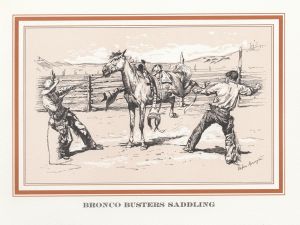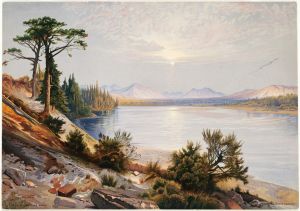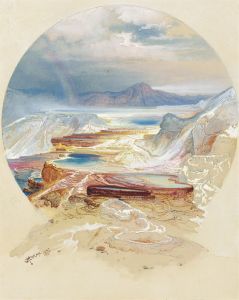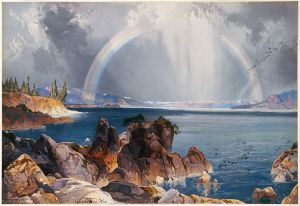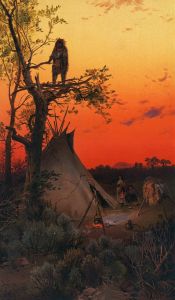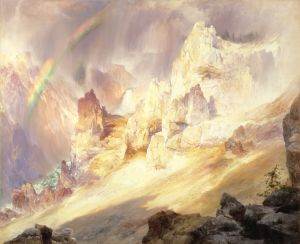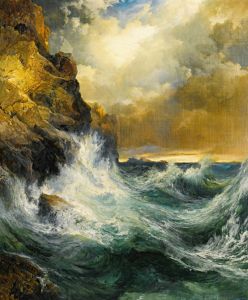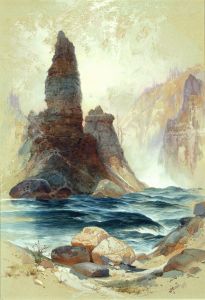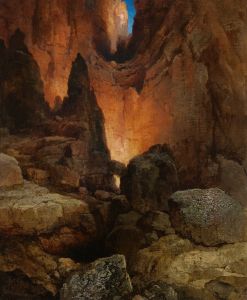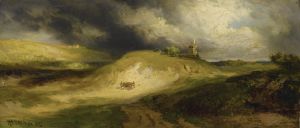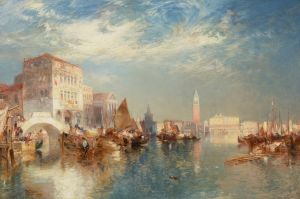
Yellowstone
A hand-painted replica of Thomas Moran’s masterpiece Yellowstone, meticulously crafted by professional artists to capture the true essence of the original. Each piece is created with museum-quality canvas and rare mineral pigments, carefully painted by experienced artists with delicate brushstrokes and rich, layered colors to perfectly recreate the texture of the original artwork. Unlike machine-printed reproductions, this hand-painted version brings the painting to life, infused with the artist’s emotions and skill in every stroke. Whether for personal collection or home decoration, it instantly elevates the artistic atmosphere of any space.
Thomas Moran's painting "Yellowstone" is a significant work in the history of American art, known for its role in the establishment of Yellowstone National Park. Thomas Moran, an English-born American painter, was a prominent figure in the Hudson River School, a mid-19th century American art movement characterized by its realistic and detailed portrayal of American landscapes.
Moran first became associated with Yellowstone through his participation in the 1871 Hayden Geological Survey of the Yellowstone region, led by Ferdinand V. Hayden. This expedition was the first federally funded exploration of the area, and it played a crucial role in the decision to designate Yellowstone as the first national park in the United States. Moran was invited to join the expedition as a guest artist, and his work during this time would prove pivotal.
During the expedition, Moran created numerous sketches and watercolors of the Yellowstone region, capturing its dramatic landscapes, geothermal features, and vibrant colors. His artistic interpretations of Yellowstone's unique scenery were instrumental in conveying the area's beauty and significance to the American public and government officials. Moran's paintings, along with the photographs taken by William Henry Jackson, another member of the expedition, were presented to Congress and helped persuade lawmakers to establish Yellowstone National Park in 1872.
One of Moran's most famous works from this period is "The Grand Canyon of the Yellowstone," a large-scale painting completed in 1872. This painting, along with others he created based on his sketches and studies from the expedition, showcased the grandeur and majesty of Yellowstone's landscapes. "The Grand Canyon of the Yellowstone" was purchased by the United States Congress for $10,000, a significant sum at the time, and it was displayed in the Capitol, further solidifying Moran's influence on the creation of the national park.
Moran's paintings are characterized by their vivid colors and dramatic compositions, which capture the awe-inspiring nature of the American West. His work not only contributed to the establishment of Yellowstone National Park but also played a role in the broader national park movement, inspiring the preservation of other natural areas across the United States.
Thomas Moran continued to paint scenes of the American West throughout his career, and his works remain celebrated for their artistic and historical significance. His paintings of Yellowstone, in particular, are considered masterpieces of American art and are held in high regard for their role in the conservation movement.
Today, Moran's works can be found in various museums and collections, including the Smithsonian American Art Museum and the National Gallery of Art. His legacy endures as a testament to the power of art in shaping public perception and policy, particularly in the realm of environmental conservation.





